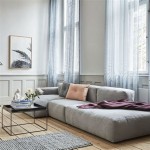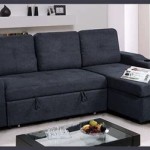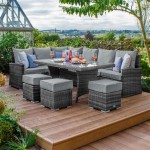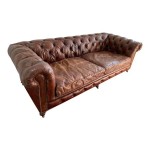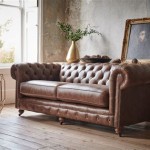What Colors Complement a Light Brown Sofa?
A light brown sofa offers remarkable versatility in interior design. Acting as a neutral foundation, it allows for a wide spectrum of colors to be incorporated into the surrounding space, enabling a range of aesthetic styles. The success of any color pairing, however, hinges on understanding the nuances of color theory and how various shades interact with light and the existing decor.
Light brown, often associated with warmth and natural elements, provides a grounding effect in a room. Its inherent neutrality means that it can either recede into the background, allowing other bolder colors to take center stage, or it can be emphasized through complementary pairings that enhance its subtle beauty. The selection of accompanying colors is paramount in achieving the desired ambiance, whether it be one of tranquility, energy, or sophistication.
Understanding the Undertones of Your Light Brown Sofa
Before selecting a color palette, it’s crucial to identify the undertones present in the light brown sofa. These undertones can be warm (yellow, orange, or red), cool (blue, green, or gray), or neutral. To discern the undertones, place a white sheet of paper next to the sofa and observe how the brown compares. Does it lean more towards a golden hue (warm), a grayish cast (cool), or remain relatively balanced (neutral)?
A sofa with warm undertones will harmonize well with other warm colors, creating a cohesive and inviting atmosphere. Conversely, cool undertones might benefit from pairings with cooler shades to maintain a sense of balance and tranquility. Neutral undertones offer the greatest flexibility, accommodating a wider array of colors without clashing.
Ignoring the undertones can lead to a discordant color scheme. For example, pairing a light brown sofa with warm undertones with a predominantly cool color palette might result in a space that feels disjointed. Therefore, a careful assessment of the sofa's inherent color characteristics is a foundational step in the design process.
Exploring Complementary Color Schemes
Complementary colors are those that sit opposite each other on the color wheel. When used together, they create a vibrant contrast that can add energy and visual interest to a room. While a direct complementary pairing might be too intense for some, variations in saturation and value can soften the effect while still retaining a sense of dynamism.
For a light brown sofa, examples of complementary color schemes include:
- Blue: Blue, particularly lighter shades like sky blue or dusty blue, offers a calming contrast to light brown. The combination evokes a sense of serenity and can be particularly effective in bedrooms or living rooms designed for relaxation. Deeper blues, such as navy or indigo, can create a more sophisticated and dramatic effect.
- Green: Green, being a color associated with nature, complements light brown beautifully. Olive green, sage green, or even a vibrant emerald green can all work well, depending on the desired mood. Green introduces a sense of freshness and vitality to the space.
- Purple: Purple, especially lighter lavender or lilac shades, can provide a subtle yet elegant contrast. Deeper purples, like plum or eggplant, create a more luxurious and opulent atmosphere. The key is to use purple sparingly, perhaps as an accent color in pillows, throws, or artwork.
When using complementary colors, consider the 60-30-10 rule. This rule suggests allocating 60% of the room's color palette to a dominant color (in this case, light brown), 30% to a secondary color (the chosen complement), and 10% to an accent color that ties the scheme together. This helps maintain balance and prevents the space from feeling overwhelming.
Leveraging Analogous and Monochromatic Color Schemes
Analogous colors are those that sit next to each other on the color wheel. Using analogous colors creates a harmonious and cohesive color scheme that is visually pleasing and calming. For a light brown sofa, exploring analogous colors can result in a sophisticated and understated aesthetic.
A monochromatic color scheme involves using different shades and tints of the same color. This approach creates a sense of unity and depth. For a light brown sofa, a monochromatic scheme might involve using varying shades of beige, cream, and other light browns in the surrounding decor. This can be achieved through wall paint, rugs, curtains, and accessories.
Examples of analogous and monochromatic color schemes for a light brown sofa include:
- Beige and Cream: These neutral shades create a soft and inviting atmosphere. Using different textures and patterns within this scheme can add visual interest and prevent it from feeling monotonous.
- Orange and Yellow: These warm colors enhance the natural warmth of the light brown sofa, creating a cozy and inviting space. Consider using muted tones of orange and yellow to avoid overwhelming the room.
- Gray and Greige: These cool neutrals offer a sophisticated and contemporary look. Gray and greige provide a subtle contrast to the light brown sofa, creating a balanced and calming environment.
When employing analogous or monochromatic color schemes, it is essential to incorporate varying textures and patterns to add depth and dimension to the space. This can be achieved through the use of different fabrics, materials, and decorative elements.
Neutral Color Pairings: Timeless Elegance
Neutral colors, such as white, gray, black, and beige, offer a timeless and versatile backdrop for a light brown sofa. These pairings create a sense of sophistication and elegance, allowing the sofa to blend seamlessly into the overall design.
White walls provide a clean and bright canvas that enhances the light and airy feel of a room. Pairing a light brown sofa with white walls creates a classic and sophisticated look that is both timeless and versatile. Accents of black or gray can add depth and visual interest to the space.
Gray walls offer a more contemporary and sophisticated alternative to white. Light gray walls create a calming and neutral backdrop, while darker gray walls provide a more dramatic and moody atmosphere. A light brown sofa can soften the coolness of gray walls, creating a balanced and inviting space.
Examples of neutral color pairings with a light brown sofa include:
- White and Black: This classic combination creates a sophisticated and timeless look. White walls and black accents provide a clean and crisp contrast to the light brown sofa.
- Gray and Cream: This combination offers a more subtle and understated elegance. Gray walls and cream-colored accents create a calming and neutral atmosphere.
- Beige and Taupe: This combination creates a warm and inviting space. Beige walls and taupe-colored accents enhance the natural warmth of the light brown sofa.
When using neutral color pairings, it is important to incorporate textures and patterns to add visual interest and prevent the space from feeling bland. This can be achieved through the use of different fabrics, materials, and decorative elements.
Incorporating Accent Colors: Adding Personality and Flair
Accent colors are a powerful tool for adding personality and flair to a room. These colors are used sparingly to highlight certain elements and create visual interest. When chosen carefully, accent colors can transform a neutral space into a vibrant and engaging environment.
The choice of accent colors should be guided by the overall color scheme and the desired mood. For a light brown sofa, a range of accent colors can be used, depending on the desired effect. For instance, pops of bright yellow or orange can add energy and excitement, while touches of deep blue or green can create a sense of calm and serenity.
Examples of accent colors that complement a light brown sofa include:
- Yellow: Bright yellow accents add a cheerful and energetic touch to the space. Yellow works particularly well in living rooms or sunrooms, creating a warm and inviting atmosphere.
- Orange: Orange accents create a cozy and inviting feel. Muted tones of orange, such as terracotta or burnt orange, can add warmth and sophistication to the room.
- Teal: Teal accents offer a refreshing and contemporary contrast to the light brown sofa. Teal works well in bedrooms or living rooms, creating a calming and stylish environment.
- Coral: Coral accents add a touch of vibrancy and sophistication. Coral works particularly well in coastal-inspired spaces, creating a cheerful and inviting atmosphere.
When incorporating accent colors, it is important to use them strategically and sparingly. Too many accent colors can overwhelm the space and create a sense of clutter. The key is to focus on a few key areas and use accent colors to draw the eye and create visual interest.
Considering Lighting and Space
The interplay of light and space significantly impacts how colors are perceived. Natural light tends to enhance the vibrancy of colors, while artificial light can alter their appearance. A color that looks perfect in a showroom might appear different in a room with limited natural light.
In smaller spaces, lighter colors are generally preferred as they create an illusion of spaciousness. Darker colors can make a small room feel cramped and claustrophobic. Therefore, when working with a small space, it is best to stick to lighter shades and use accent colors sparingly.
In larger spaces, there is more flexibility in terms of color choices. Darker colors can be used to create a sense of intimacy and warmth, while lighter colors can enhance the sense of space and airiness. The key is to balance the colors and create a harmonious and inviting atmosphere.
When selecting colors for a room, it is essential to consider the amount of natural light it receives. Rooms with ample natural light can handle bolder and more saturated colors, while rooms with limited natural light benefit from lighter and more reflective colors.
Testing Colors Before Committing
Before committing to a particular color scheme, it is always advisable to test the colors in the actual space. This can be done by painting small swatches of the chosen colors on the walls and observing how they look at different times of the day and under different lighting conditions.
Paint samples are relatively inexpensive and can save significant time and money in the long run. By testing the colors beforehand, it is possible to avoid costly mistakes and ensure that the chosen color scheme is truly compatible with the space and the light brown sofa.
It is also helpful to gather inspiration from various sources, such as magazines, websites, and social media platforms. This can provide a sense of what is currently trending and help to refine your personal style. However, it is important to remember that trends come and go, and the ultimate goal is to create a space that reflects your individual taste and preferences.
Ultimately, the best colors to pair with a light brown sofa are those that resonate with your personal style and create the desired atmosphere in your home. By understanding the principles of color theory and experimenting with different combinations, it is possible to create a space that is both beautiful and functional.

Your Ultimate Guide To Styling A Brown Sofa Center

Best Brown Couch Ideas For Your Living Room Farmhousehub

What Colours Go With A Brown Leather Sofa Inspiration Furniture And Choice

What Colour Goes With A Brown Leather Sofa Guide

What Colour Goes With A Brown Leather Sofa Deluxe House

Decorating The Best Colours To Pair With A Brown Leather Sofa Houzz Ie

How To Add Color A Room No Matter What Your Palette Is Brown Couch Living Decor Couches

What Colour Goes With Brown Leather Sofa Photos Aspect Wall Art

Ideas For Wall Colors That Go With Brown Furniture The Inside

Best Brown Couch Ideas For Your Living Room Farmhousehub

